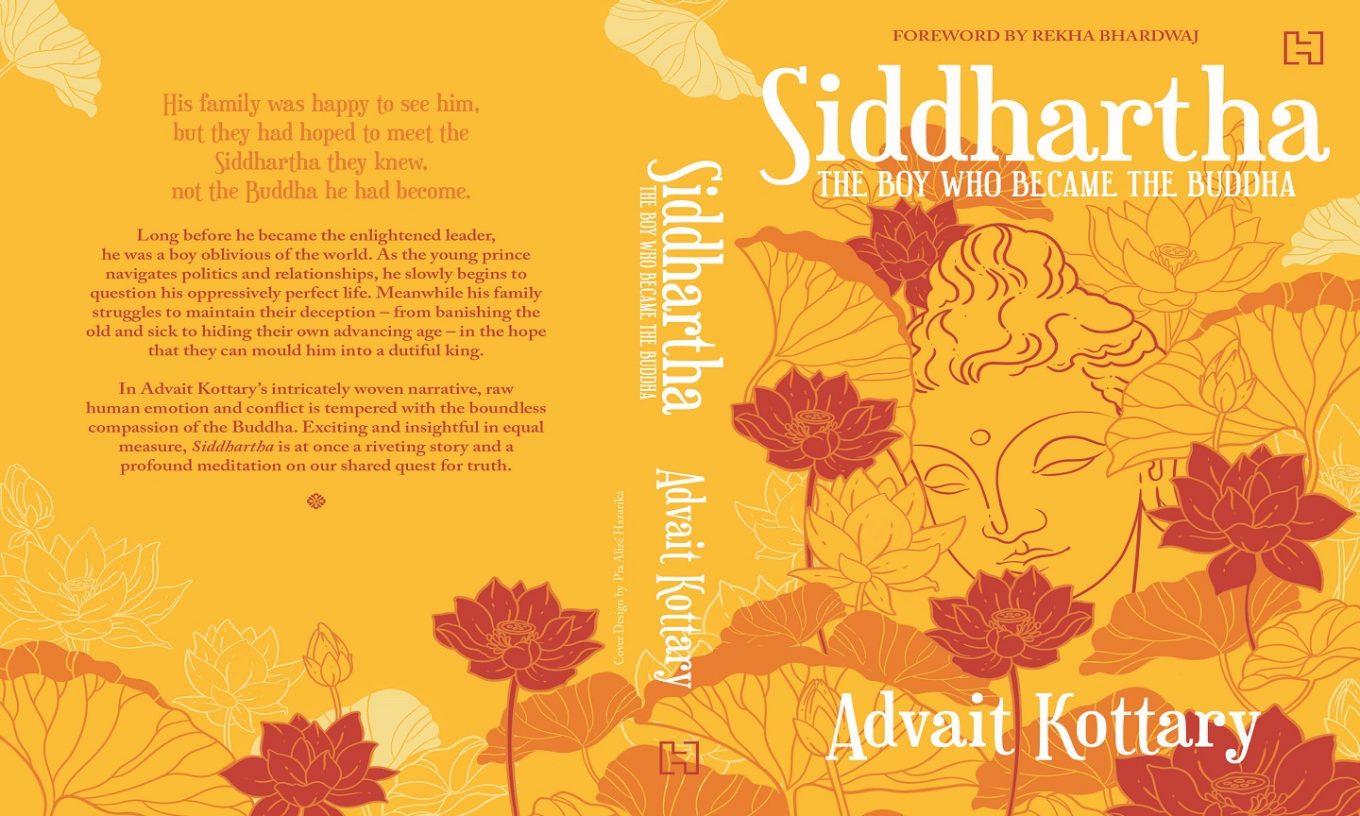The Man Who Would Not Be King
What does the Buddha mean in a world riven by wars and fissures? More than 2,500 years after he preached his eight-fold path, does his example matter to a world divided by multiple human-made constructs? In the wake of the many works on the Buddha over millennia, is there anything about his life and times that can be articulated afresh? Advait Kottary’s Siddhartha: The Boy Who Became the Buddha might provide a few answers to these questions. Many people have written about Buddha and Buddhism, but few have attempted to look at Siddhartha’s journey to Buddhahood through the prism that Advait Kottary does in his debut work of historical fiction. It is a remarkably well-imagined look at the life of, probably, the greatest man in the history of human civilization. The author spoke to Shantanu Ray Chaudhuri.
The story of the Buddha has been widely documented and written about, yet you have chosen to revisit it. What drove you to this as your first book?
I’ve always been fascinated with stories from the past, wondering how much of it happened the way we imagine it, and constantly imagining what life was like in any age of gone by. Siddhartha, or the Buddha’s story, came to me at a very interesting time in my life. I had just quit my engineering job, and though I vaguely knew I wanted to act and write, I had no real clue what lay ahead, or indeed how I should go about it. I was lost, and was going through what I now realise may have been a quarter-life crisis. It was at this time that I found a copy of Old Path, White Clouds by the revered Buddhist monk Thich Nhat Hath at home. I began to flip through it, often just opening up to a random page every time and reading about a fascinating story from Siddhartha’s life. I found it so striking that a lot of questions that Siddhartha had from his life and his world were questions that we have from life today. Even as I was trying to find my feet in life, something resonated within me, and I found so many facets of his life that barely anyone knew about…
What fascinated me the most were the lesser-known parts surrounding the known facts, the nuances that turn those facts into and breathe life into a story. I couldn’t find Siddhartha’s angst being dissected before, or his pain being talked about. With each successive draft, I understood that in this layer of emotions lay something that we hadn’t thought of before. And of course we know now that Siddhartha found the answers he was looking for, but back when he left the palace and renounced his life, he had no idea if he would ever find what he was looking for. Can you imagine the turmoil of someone who can surrender the rest of their time to finding an answer they may never actually find? There’s a great human story there, and I wanted to delve into the things in his life that built up to that journey, while learning more about it myself.
Talk to us about the choice of telling the story in the first person.
Though I was familiar with the story of Siddhartha, when I began to read about his life, and the choices of those who helped shape it, I found myself wondering about what was going through his mind. I couldn’t even begin to imagine the anguish of a boy who grows up not knowing about death and suffering, only to later discover that his biological mother died soon after giving birth to him. Every time I had read about a particular aspect of his life, I realised that we had largely taken a very distant approach to understanding his story. We’ve always seen the Buddha as a stoic figure, a sea of calm, and maybe we’ve seen and heard less of the human aspect to his fascinating life. He was at some point in time a human being after all, a son, a father, a brother and a boy curious about the world around him. I felt compelled to tell the story, and it seemed only natural to tell it through his eyes.
What was the research that went into your book, and how long was the journey from when you had the idea, to publication?
If I’m honest I can’t really put an exact number to the amount of research that went into it in terms of hours, days or even months. I can just say, A LOT! The book has been through at least four major rewrites, along with countless revisions along the way. The editors at Hachette, Poulomi and Sonali, really guided me well through this entire process. Through each and every draft of the book, I’d read more and more about the subject, and there were so many beautiful tales that couldn’t make it to the final manuscript too! Of course there were other things I was doing, but putting the book aside for a few months, and revisiting it made me come back with a fresh perspective too, which really helped the process.
How much of what you write in the book is fact, and how much of it is dramatised?
History is certainly the greatest storyteller. Most of what you read in the book is fact. The places, the people, the wars and the incidents are all part of recorded history. That being said, I did reimagine a lot of the way these documented events played out. It was similar for the interpersonal relationships involved in the story while weaving the narrative, especially since I was telling the tale from Siddhartha’s point of view. It was critical to understand where he was in his spiritual journey at the time those things happened, and the effects of those incidents on him, in the larger context of his life, against the backdrop of the world he grew up in.
There are many personal touches to the other characters in the book which help create this world. Can you tell us about how you shaped these characters, and how much of it you had to reimagine?
I think it’s easy to think of characters of the past as unidimensional beings. That’s how history is academically taught to us; good person, bad person, winner, loser, etc. But when telling a story it would be a huge injustice on my part if I did the same. I’m an actor, and the biggest strength and skill one can have is empathy, and every character I’ve played, I’ve always had to personalise the motivations, the desires, the fears and the joys of them all. I tried to imagine all the characters in Siddhartha in the same manner. For example, it would have been easy for us to think about Siddhartha’s father King Shuddhodana as wrong for sheltering him from the realities of life, like pain, suffering and death. But wouldn’t that also be a myopic way of looking at things? That wouldn’t take into account the prophecies that had been told to him, and the fact that Siddhartha had been born after years and years of wanting a child; the stakes were incredibly high! It was both fun and challenging in equal measure to understand that when we look back at the lives and decisions of these characters we are doing it with the powers of hindsight.
All it took was a little curiosity and thought about why these characters did what they did; they were simply following their convictions in that moment. Most of it seemed logical, given we knew what each of these characters wanted at different points in time, but of course there was a fair bit of imagination when it came to their conversations. I was always fascinated by how each character would be at their most vulnerable, because that is a part of history that is never touched upon, and I’ve tried to do that in Siddhartha.
A lot of the issues you talk about in your book like war, suffering, violence, are relevant even today. Did you make a conscious choice to highlight them in your book?
When I first began to think about the story of Siddhartha, what struck me was always the contemporary relevance of the questions Siddhartha asked, more than 2500 years ago. Siddhartha always questioned everyone around him, but it was with a view to understand the universe and the world that he was born into. What was challenging was understanding the internal journey of Siddhartha through these events, his emotions and learnings as he grew up. These are all relevant issues today. As long as we keep asking ourselves these questions, we are alive and striving to grow. I think the story of Siddhartha is quite timeless in that respect.
Talk to us about your influences and inspirations. Which films, writers, books influenced you and the way you executed this story?
Growing up as the son of a journalist and a scriptwriter, I’d be lying if I said my parents Sailesh and Gajra Kottary hadn’t strongly influenced my writing. I’ve also been inspired by Antoine de Saint-Exupéry’s The Little Prince and the way it spoke of such beautiful thoughts in such a simple manner, a principle I tried to keep in mind while writing Siddhartha. Some of my favourite films are Dr. Strangelove, the Batman Trilogy, and the television series Succession. I’m quite fond of storytelling in general as an actor and creator, and I have this weird habit of trying to piece together the narrative in everything I see, maybe even an advertisement in a magazine, deconstructing it and analysing the choices made by the creators.
Your book showcases a very visual style of storytelling. Are there any plans to turn this into a script for the screen?
I’m a very visual thinker, so when I read or write about something, I watch it unfold like a movie in my mind, and I guess that has come across to some extent in my writing too! I have had interest expressed in the book from a couple of wonderful film-makers, and hopefully I’ll have some amazing news to share soon!
Are there any more books you have in the pipeline? What about other creative pursuits?
Yes, most definitely! I’ve got two drafts screaming at me for attention. One is about the life of another historical figure, closer to modern times, who lead an unbelievable life. The other one is pure fiction and more in the genre of dark humour; a dystopian take on modern civilisation. I live in London, and continue to act and perform in theatre here as well, so there’s always something exciting happening on that front. So the hunt for great stories continues!





